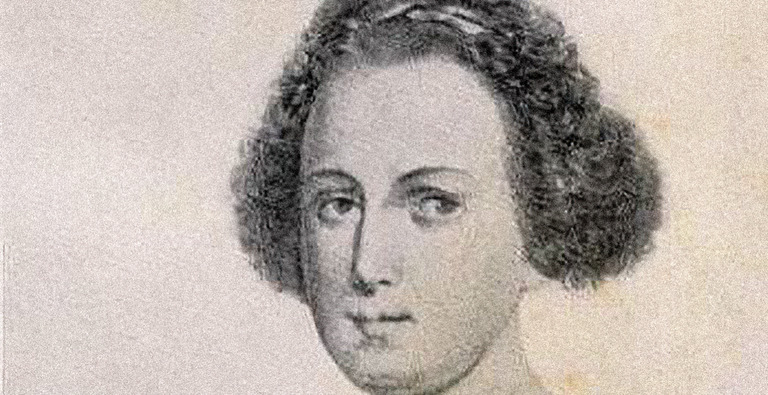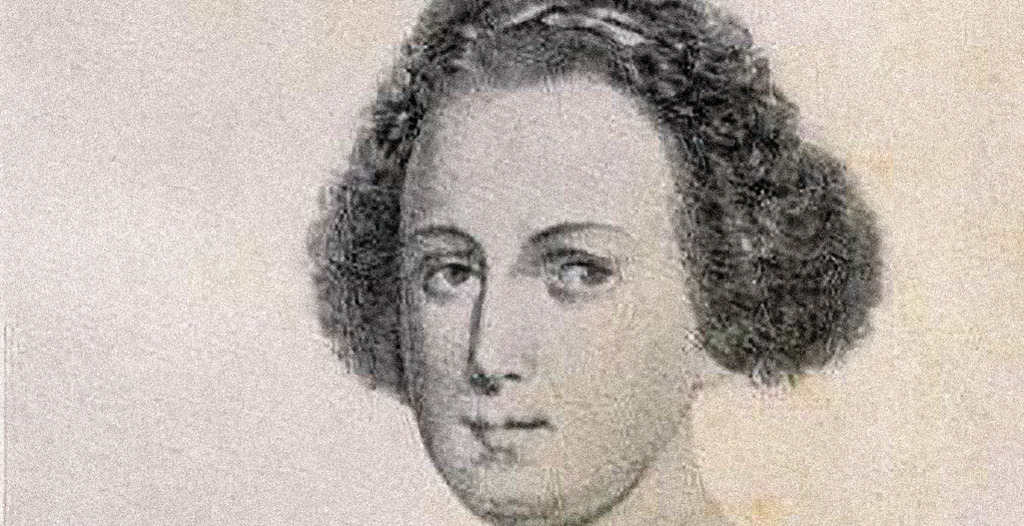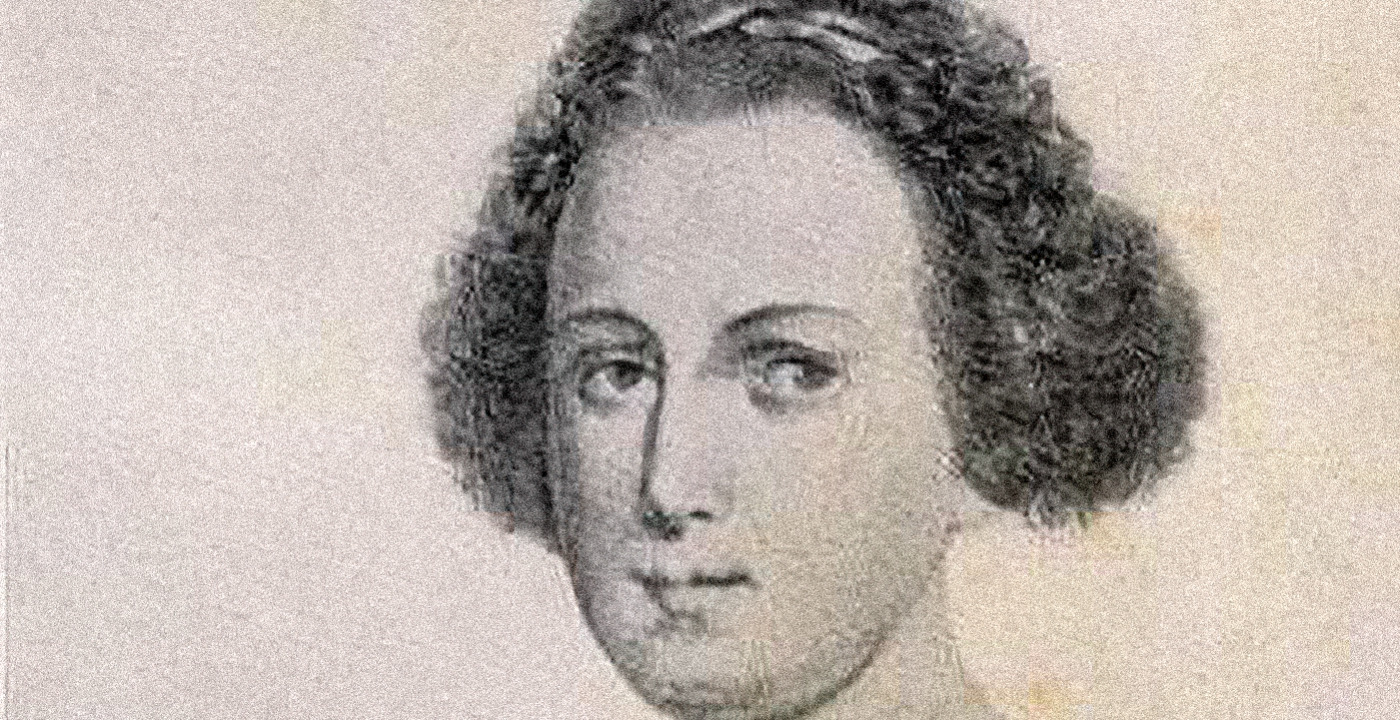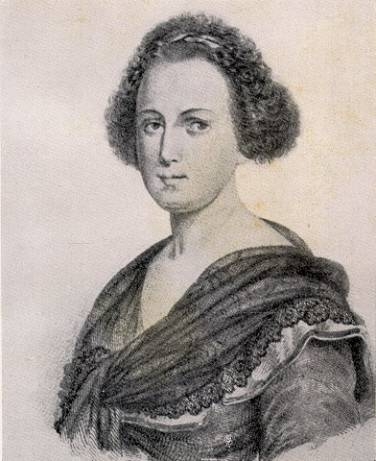Birth
Rome, Palazzo Lopez de Leon Via Ripetta
Education
Academy of Philalethes
Death
August 20th, 1799 in Piazza del Mercato, 80133 Napoli NA, ItalyReligion
Roman CatholicEleonora de Fonseca Pimentel was a poet, activist, journalist, and revolutionary. She was a leading figure in the revolution and establishment of the Neapolitan Republic, and she edited the newspaper Monitore napoletano. In her writing, she clearly expressed her desire to build a more honest and free society through people's education. When the republic fell, she was put to death by hanging.
Personal Information
Name(s)
Leonor Anna Maria Felice da Fonseca Pimentel Chaves better known as Eleonora de Fonseca Pimentel
Date and place of birth
January 13, 1752, Rome, Palazzo Lopez de Leon Via Ripetta
Date and place of death
August 20, 1799, Piazza del Mercato Naples
Family
Mother: Caterina Lopez de Leon ( -1771)
Father: Clemente de Fonseca Pimentel Chaves de Beja, (1723 - May 14, 1785)
Marriage and Family Life
Eleonora moved to Naples with her family in 1756 at the age of four and not eight; it is probable that the chronological error could be explained by the desire to identify the cause of the move of the Portuguese family to Naples because of a political problem involving their residing in the Papal States. In 1760, in fact, following the expulsion of the Jesuits from Portugal, the relationship between church and state had deteriorated to the point that, in July of that year, the Portuguese ambassador in Rome issued three edicts enjoining the Portuguese subjects resident in the State of the Church to leave within a month.
In Naples, Eleonora's family lived in the working-class neighborhood of Santa Teresella degli Spagnoli, in the Piazzetta del Rosario of Palazzo. The family unit was formed not only by Eleonora, her parents and her two brothers Michele and Giuseppe, Maria Lopez, Catherine's sister and wife of Ferdinand Fonseca, and their two sons Michele and Giulia. Uncle Antonio Lopez, who was an abbot, arrived from Rome and was involved in Eleonora's education. Uncle Antonio gave her lessons and introduced her to the works of Metastasio and other modern authors until, well aware of the quality and growth of Eleonora, he invited her to attend literary salons as much as possible, being able to communicate and exchange ideas on the most varied issues.
In 1778 Eleonora and her family became the subjects of the Kingdom and the Portuguese nobility was recognized.
At the age of twenty-one, her hand was offered to her cousin Michele, who left for Malta about three years later. After her cousin Michele broke off the engagement, her father Don Clemente found a new suitor, Lieutenant Pasquale Tria de Solis who was 44 and who had enlisted in the Regiment of Sannio and he married Eleonora on February 4, 1778.
But it was an unhappy marriage marked by periods of deep sadness and several episodes of violence. After few months of marriage, on October 31,1778 Eleonora gave birth to a son, Francesco Maria Clemente Nicola who died few months later as result of an epidemic, on June 25, 1779. After the terrible loss Eleonora, who in the meantime was deprived of her pride and personality owing to the violence of her husband, could not find any reason to continue living for a long time. She became pregnant again, but because of the beatings of her husband she had a miscarriage. It was at this stage that, thanks also to the support of her father, on June 26, 1785 she obtained the separation from her husband, becoming a free woman once again. She began to live again and to frequent the salons and her friends.
Issue of Marriage
Francesco Maria Clemente Nicola b-October 31,1778 – d. June 25 1779
Education
From her adolescence, Eleonora revealed various talents and a passion for studies; she loved in fact not only classical literature and poetry, but also scientific studies. At the age of sixteen, she recited verses in the literary salons. Her uncle was her first preceptor and encouraged her to attend the most prominent literary salons where she was admired for her perfect knowledge of Greek and Latin, to which she added Portuguese and French. Her education proceeded down a precise path that took her out from the traditional mould of gender towards certain social models not so common to the female experience but which, however, had begun to open a window to women on the world of knowledge and of "public affairs”.
So soon, entering the salons, she came into contact with many intellectuals who began to appreciate her verses, so as to be admitted in 1768 to the Academy of Philalethes, and then to that of Arcadia.
Religion
Roman Catholic
Transformation(s)
The years 1794-1795 were for Eleonora crucial for an intellectual and political crisis that culminated, emotionally, in the death sentence for the young authors of the Jacobin conspiracy. As Benedetto Croce pointed out, she belonged to those idealists who saw the government moving away from the program which had been followed and cheered, and at the same time she discovered in France the program that was in the hands of the revolutionary people. Therefore, moving away from the old hopes and the old methods of collaboration with the government, the Neapolitan intellectuals acquired faith in the new methods, in a process that transformed them, from royalist to revolutionary. For Eleonora, there began a period when she was suspected of having links with the environment of the patriots, a period that culminated with the suspension of royal aid in 1797. On October 5 1798, with the accusation of reading forbidden books and keeping meetings at her own home, Eleonora was arrested and imprisoned in the jail of Vicaria.
She was released from prison in early January 1799, and it is almost certain that she immediately attended meetings of the Committee of the patriots who advocated the establishment of a democratic republic. Eleonora took possession of Sant’ Elmo Castle with the other patriots, becoming a protagonist in the events of the Neapolitan Republic and opening the way for the French in Naples.
Eleonora, after having known life in prison, having seen fighting and dying around her, entered into a personal struggle, and exposed herself by affirming freedom and defeating those now identified in the image of the tyrants, the Bourbons of Naples. In 35 numbers of the Monitore Napoletano she revealed her strong personality, expressing her independence in the face of any pressure and the measures of the Government. Her primary intent was to protect the interests of the country and above all the people, and the first purpose in the newborn Republic was to instruct the mass of people in the new concept of society.
Contemporaneous Network(s)
Elenora was very active politically throughout her long life.
less
Significance
Works/Agency
In the world of the academies and salons arose innovative ferments which tended to the implementation of a human and social emancipation process in the context of a liberal and enlightened monarchy, namely that of Ferdinand IV and Maria Carolina. Eleonora joined with enthusiasm the climate of confidence in the Bourbon Reforms. The education path of the Arcadian poet is significant: as an intellectual, she proceeded like any other philosopher and man of letters of her time and in Naples was impressed during the "heroic period" of the Bourbon dynasty, and later gave her adherence to revolutionary ideals beyond the Alps.
The effects of the French revolutionary wave even brought about the overthrow of King Ferdinand IV and Maria Carolina, the latter, after twenty years of an allegedly reformist government, had turned her back on the classes considered the vehicle of the revolution. Consequently, the royal couple broke their ties with the very reformist forces who had sustained and supported her in her attempts to modernize the state structure of the Kingdom.
During the early ‘90s there was a process of accession, which was underway, by the intellectual reformist class, to the principles of revolutionary action. Eleonora became the leading figure in the revolution and the subsequent establishment of the Neapolitan Republic. Her life in the months of the republic was marked by whole direction of Monitore the republican newspaper. She wrote most of the articles by herself, publishing information, as well as collecting it directly, participating in the meetings of the government as well as the events and ceremonies of the Republic. Not only was she never uncritically pro-government, but, even though she was aware that the fate of the weak Neapolitan Republic depended on the presence of French arms, she did not hesitate, in various circumstances, to openly criticize their occupying army.
Contemporary Identifications
Eleonora is mainly included in programs of literature and poetry, less in the historical fields, she is also present in the studies of the history of political thought and the history of the Kingdom of Naples.
Referenced in other female biographies
We can find traces of Eleonora Fonseca Pimentel in the life-stories of:
Maria Carolina, Queen of Naples.
Maria Luisa Sanfelice.
Emma Hamilton.
Reputation
Eleonora de Fonseca Pimentel, poetess, scholar of jurisprudence, natural and mathematical sciences, at first was an enthusiastic supporter of Ferdinand IV of Bourbon’s enlightened political reforms. After the French Revolution and the radical change of Neapolitan government policy, much more illiberal and repressive, she was an active protagonist of the 1799 Revolution and was a co-founder of the Neapolitan Republic. Editor of the newspaper Monitore napoletano, she was a free, courageous journalist, committed to changing the “Neapolitan plebs” into “civil people.” At the fall of the Republic, she was fearless in meeting death by hanging.
The image of Eleonora Fonseca Pimentel is based on the cultural model of the republican martyr according to the characters of the ancient Roman virtus: the real values would then be recounted in almost all the nineteenth-century biographies. The chroniclers, in fact, present her on the gallows platform as a woman without a moment of weakness: the same fearless attitudes in the face of death in mythography reserved to male protagonists of the 1799 Neapolitan events.
In her writings we can capture clear messages in which she expressed her desire to build a more honest and free society through the education of the people.
Legacy and Influence
At present in Naples there is a square named after her and also a High school.
In Rome there is a street in the neighbourhood Vittoria, a monumental plaque in via della Ripetta and in Rione Campo Marzio
In Florence and Milan there is a street called Via Eleonora Fonseca Pimentel.
less
Controversies
Controversy
For so many decades the figure of Eleonora has been greatly undermined from a partial historiography. The scant historical documentation, became rare over the decades and produced questionable and controversial biographical reconstructions of Eleonora. Hence the many 'Eleonoras' with their various faces have been depicted: the Bourbon, the poetess, the traitor, the feminist, the revolutionary, the exalted, the infanticide and even the hermaphrodite, all arbitrary, forced and often offensive definitions, but unfortunately supported by the unbridgeable documentary gaps.
The sentence she uttered before her hanging, 'Perhaps one day it will be useful to remember all this', has passed through historical memory over the following years and centuries to be revived to this day, and for this reason the final part of the text is a moving revival of Eleonora's memory, from the anteroom of death to the chronicle of the execution
less
Bibliography
Primary (selected):
BATTAGLINI M. (ed.), Il Monitore napoletano 1799, (Napoli: Alfredo Guida Editore, 1999)
BATTAGLINI M., Napoli 1799. I giornali giacobini, (Arezzo: Borzì, 1988) .
BATTAGLINI M., Eleonora Fonseca Pimentel: il fascino di una donna impegnata tra letteratura e rivoluzione, (Napoli: Procaccini,1997).
CASSANI C., Eleonora de Fonseca Pimentel, in Dizionario Biografico degli Italiani, 48 (1997).
CROCE BENEDETTO, La rivoluzione napoletana del 1799. Biografie - Racconti – Ricerche, (Bari: Laterza,1948).
D’EPISCOPO F. (ed), Eleonora Fonseca Pimentel tra mito e storia, (Napoli: Edizioni Scientifiche Italiana, 2008)
FONSECA PIMENTEL DE E., From the Arcadia to the Revolution. The Neapolitan Monitor and other Writings ed. and trans. Verina R. Jones (Toronto: Iter Press, 2019).
FORGIONE M., Eleonora Pimentel Fonseca, (Roma: Newton & Compton, 1999).
GARGANO P., Eleonora e le altre. Le donne della rivoluzione napoletana, (Napoli, Magmata, 1999).
MACCIOCCHI M.A., Cara Eleonora. Passione e morte della Fonseca-Pimentel nella Rivoluzione napoletana, (Milano: Rizzoli,1993).
OREFICE A., Eleonora Pimentel Fonseca. L’eroina della Repubblica Napoletana del 1799, ( Roma: Salerno, 2019).
PELLIZZARI R.M, “Eleonora de Fonseca Pimentel: morire per la rivoluzione”, Storia delle Donne, 4, 2008, pp.103-121.
RAO A. M., “Eleonora de Fonseca Pimentel, le monitore napoletano et le problème de la participation politique” in Annales Historiques de la Revolution Française, 344, 2006, pp.179-191.
RECCA C., Naples and the Revolution 1799. A Clarification of the Facts by Truthful Accounts
of Some Eyewitnesses, in Understanding Social conflicts.The relationship between Sociology and History, L.M. Daher (ed), (Mimemis International, 2020).
RECCA C., Discorsi di frontiera. Eleonora de Fonseca Pimentel nella Napoli rivoluzionaria, in Fra le mura della modernità. Le rappresentazioni del limite dal Cinquecento a oggi, a cura di Lina Scalisi e José Hernndo Sànchez, 105-116, (Roma: Viella, 2019).
RECCA C., “Dying in defence of our homeland and living for her love: Naples in 1799 through the past of revolutionary women” in Storia e Politica, XI/3, 2017, pp. 608-641.
SANTOS M. T., 2001, “Leonor da Fonseca Pimentel. A Portuguesa de Nápoles (1752-1799)” in Actas do colóquio realizado no bicentenário da morte de Leonor da Fonseca Pimentel, Lisbona: Sara Marques Pereira.
URGNANI E., La Vicenda Letteraria e Politica di Eleonora de Fonseca Pimentel, (Napoli: La Città del Sole, 1998).
Archival resources:
ARCHIVIO DI STATO DI NAPOLI, -Processi antichi, Gran Corte della Vicaria, Ordinamento Zeni, Processo di separazione di d. Eleonora Pimentel Fonseca dal marito D. Pasquale Tria de Solis, fascio 133, f 43
Atti del Proc. di separazione coniugale Fonseca. Tria, deposizione di D. Giuseppe de Souza, ff. 94-98.
Atti del Proc. di separazione coniugale Fonseca. Tria, deposizione di Filippo Maria Guidi, ff. 90-94.
Portogallo, Varie 1760-1770, fasc.90.
Web resources (selected):
http://www.repubblicanapoletana.it/eleonora.htm
https://www.historypage.it/eleonora-de-fonseca-pimentel-la-portoghesina/




Comment
Your message was sent successfully